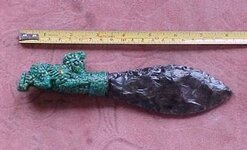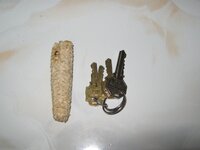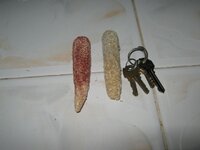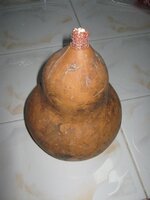cactusjumper
Gold Member
Roy,
You make an excellent point. "Corn and Culture...." was published 14 years ago. To be honest, I seldom pay attention, unless I am buying a collectable first edition. The publisher is: Westview Press. The year published was 1994.
Take care,
Joe
You make an excellent point. "Corn and Culture...." was published 14 years ago. To be honest, I seldom pay attention, unless I am buying a collectable first edition. The publisher is: Westview Press. The year published was 1994.
Take care,
Joe



 . Thanks piegrande - it's not terribly often we get to hear legends from down your way about the Aztecs.
. Thanks piegrande - it's not terribly often we get to hear legends from down your way about the Aztecs.







